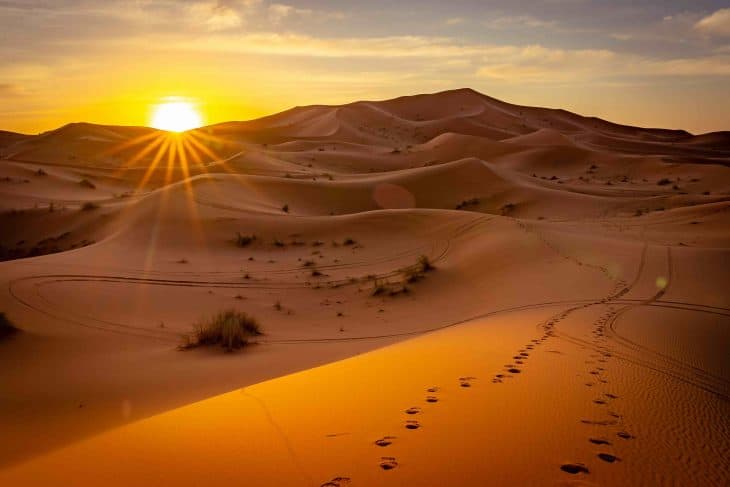
Unbeknownst to many, the largest desert in the world offers freezing temperatures. Like most people, we mistakenly associate the word “desert” with only extremely hot temperatures. This confusion possibly came from the fact that we define deserts as barren or desolate. Because of this, we often imagine deserts featuring a seemingly endless view of sand. However, frozen wastelands also fit the description of “deserts.” In truth, the top two largest deserts in the world belong to the Polar Ice and Tundra categories.
When it comes to barren deserts, you must learn about the types of deserts that exist on earth. Experts usually describe these wastelands as subtropical, coastal, and those in between. For colder regions, they’re called either polar or cold winter, depending on the area’s climate. Knowing about them helps you distinguish the difference between the hot and cold wastelands. Additionally, familiarizing yourself with these desolate regions helps you see how global warming affects the world. Get to know the largest desert in the world and its counterparts by checking out our list.
Discovering the Types of the Largest Deserts in the World
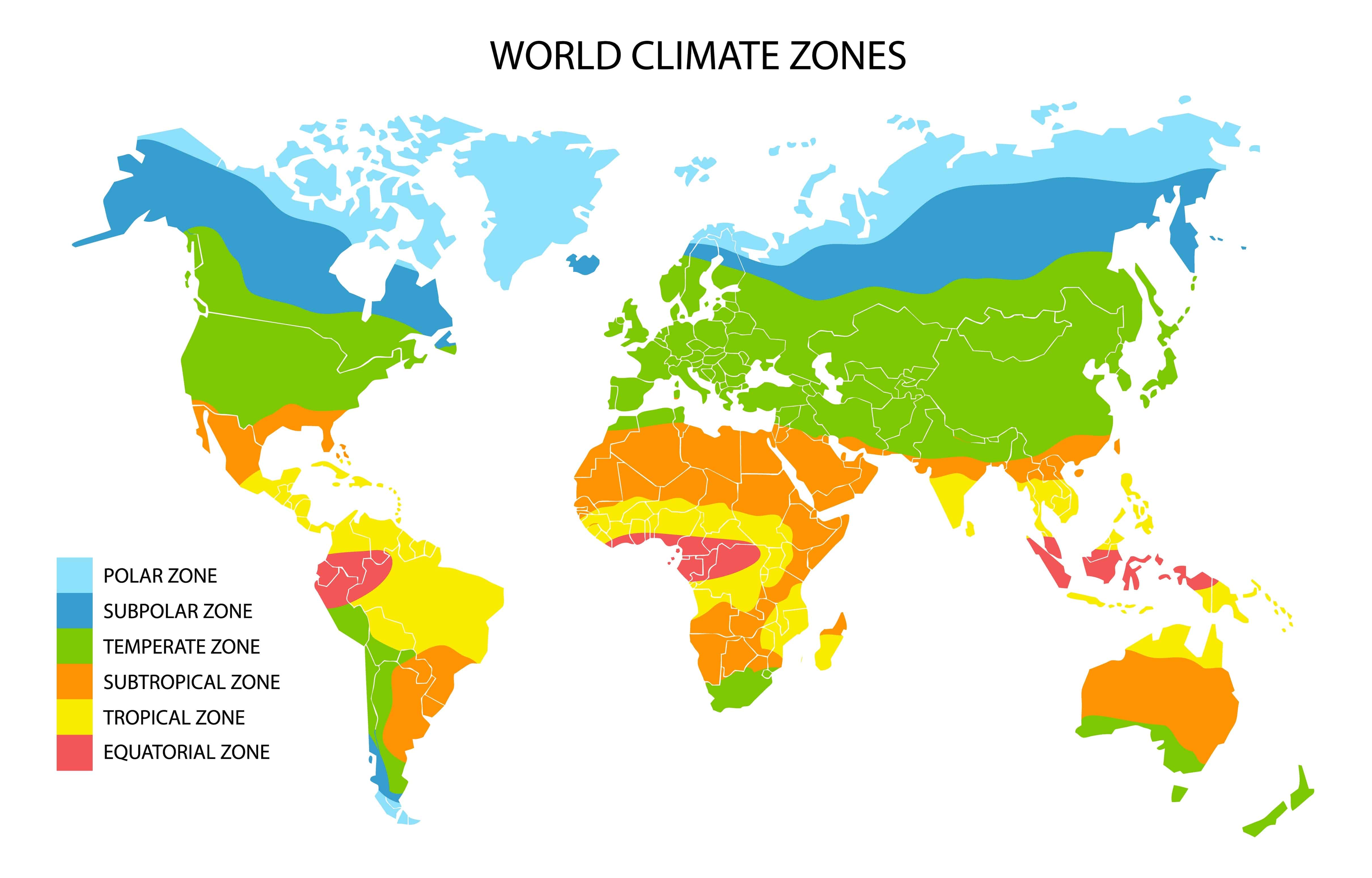
Before we get started, let’s get you acquainted with the four main types of deserts. Gaining information about them helps you know the difference between the large hot and cold landscapes. However, the main thing you need to know about deserts lies in their climates. We mentioned how global warming affects these wastelands but they don’t get much precipitation. Because of this, most people believe that all deserts feature only sandy views. Not a lot of people know that some deserts grow vegetation for the animals that live there. Unfortunately, the common answer to “Name the largest desert in the world” is usually the Sahara Desert. That response would’ve been correct if the question was “What is the largest subtropical desert in the world?” To avoid any future confusion, we decided to explain how you can differentiate the four main types of deserts.
Cold Deserts
First, the largest desert in the world belongs to the Polar Deserts category. These areas reach their warmest temperatures at less than 10 degrees Celsius. Yes, we consider that measurement as freezing but that’s the warmest record in those areas. Plus, they only receive yearly precipitation of about 250 millimeters. Due to global warming, polar deserts now contain lesser gravel plains and bedrock compared to the Ice Age. Nowadays, you may hear of melting ice caps along the Arctic. These instances caused a lot of panic for experts because it shows the severe effects of global warming.
You can find several cold winter deserts across the globe. Experts also dub these landscapes as semi-arid deserts due to the seasons of the area. Those who live nearby usually experience long and dry summers or cold winters with low rain and snowfall. The absence of higher rainfall comes from the area’s rain shadow effect. It occurs when a high mountain range keeps the sky’s moisture from reaching the area below. For example, the Gobi Desert experiences the rain shadow effect due to the Himalayan Mountains.
Hot Deserts
It may be surprising to most people but Coastal Deserts do exist. The disbelief usually comes from the fact that these majestic landscapes feature views of oceans or seas. There aren’t that many wastelands that belong to this major category. You may spot the largest coastal deserts located in Africa and South America. These areas experience an easterly pattern of winds that cause the prevention of moisture on the land. However, they still receive about 13 centimeters of rainfall every year.
Experts dub the hottest wastelands as Subtropical Deserts. You may find his type of barren landscape in almost every continent in the world. These areas experience intense hot and dry summers. During winter, these deserts feature cool yet dry temperatures. Despite receiving annual rainfalls, it only happens in short bursts. This causes the land or soil of subtropical deserts to be sandier or rockier.
The Largest Desert in the World: Antarctic Desert (Polar)
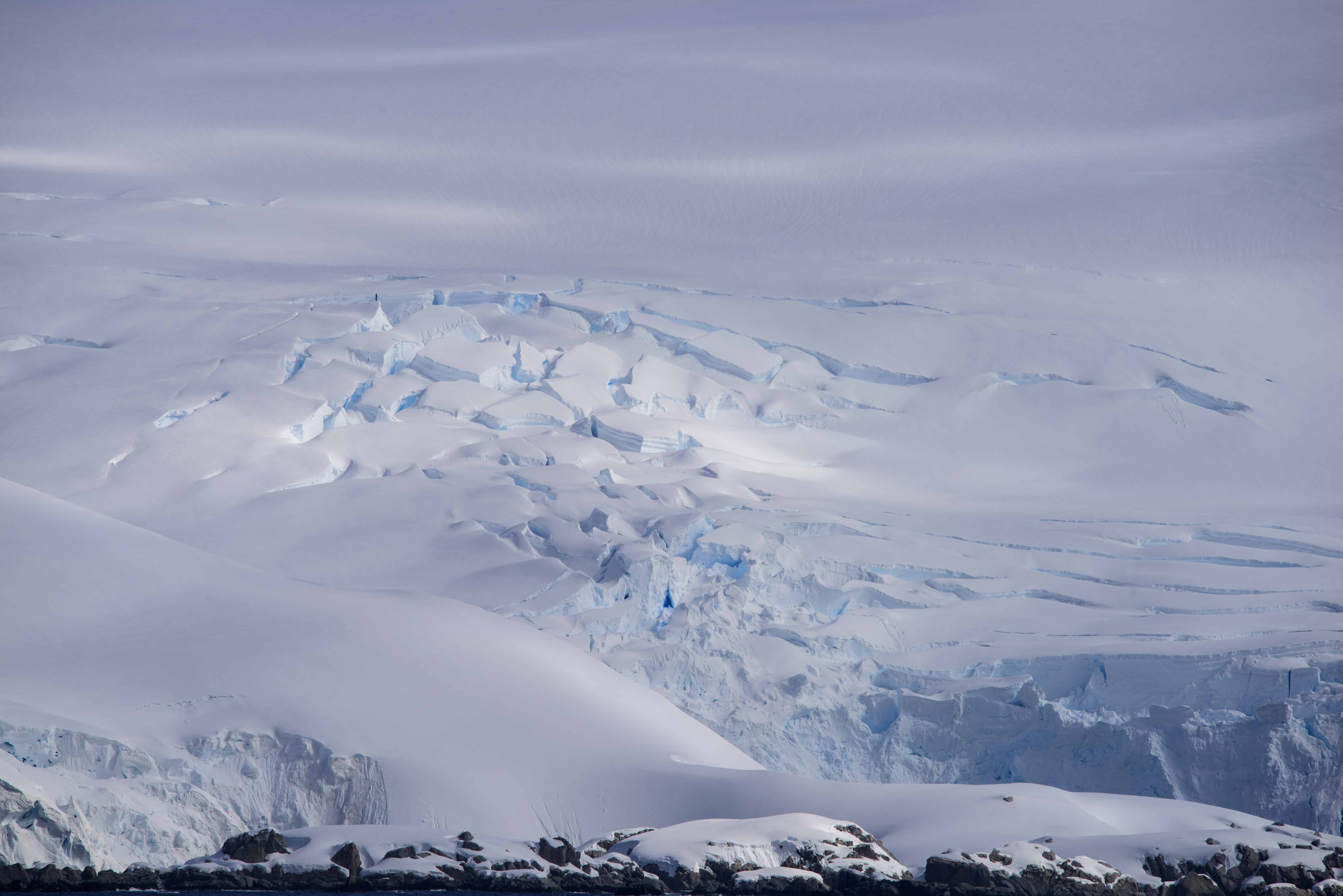
When talking about the largest desert in the world, the discussion must revolve around Antarctica. Unbeknownst to many, the Antarctic Desert spans the whole continent’s landmass. Everything seen with the naked eye is covered with snow and ice. The area only experiences the summer and winter seasons. When we say summer, it just means that the continent faces the sun. The way we experience day and night can only be measured by hours when in Antarctica. No matter what you try, the only way to tell if a day passed lies on your watch. The sun won’t set unless winter arrives. By then, the icy landscape remains enveloped in darkness until summer returns. Because of this, the Antarctic Desert’s soil cannot grow any type of vegetation. Moss and algae hail as the only types of plants that manage to survive in the ruthless Antarctic weather.
Despite its freezing temperatures, tourists flock to the Antarctic Desert during the summer. However, only animals permanently reside in the continent. We humans can’t live there unlike the penguins and seals that are used to the cold temperature. Even scientists who study and monitor Antarctica’s ice follow a rotation to avoid staying there for too long. When traveling around the continent, most people avoid the middle area. Compared to the coastal area, Antarctica’s midpoint offers intense cold signatures that may freeze people to death.
Arctic Desert (Polar)
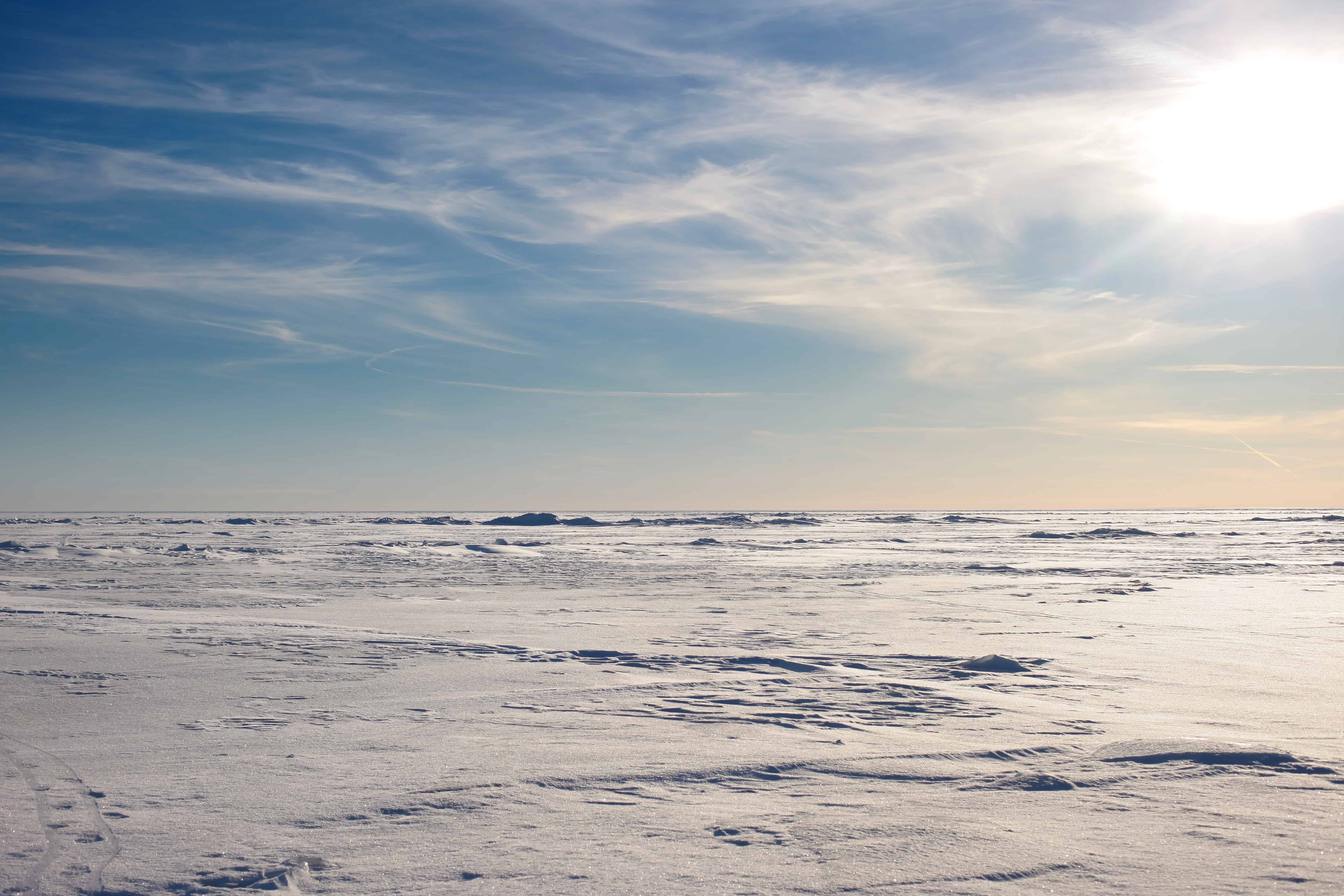
Unlike the Antarctic, the temperatures measured at the second largest desert in the world let people reside there. Some vegetation grows thanks to the area’s tundra. The land experiences a climate of long winters and short summers. Since the desert covers the Arctic Ocean and the North Pole, the icy landscape receives sunlight almost every day during the summer. Once winter comes, the residents need to adjust to days with complete darkness.
People consider the Arctic Desert as a terrestrial ecoregion. It spans about 62,300 square miles. From west to east, it measures 2,000 kilometers from west to east and 1,000 kilometers from north to south. Russian island groups Franz Josef Land, Severny Island, and Severnaya Zemlya belong to the Arctic Desert. It also covers the island of Svalbard in Norway. Because of this, Norwegians and Russians can choose to live in the residential areas of these island groups. However, they must prepare for the mentioned harsh climate. Additionally, those interested in becoming residents must secure their funds for the area’s costly living expenses. Due to the expensive conditions, establishments and companies limited the job opportunities for hopeful individuals. We suggest you just take a trip to the area if you want to check out the beautiful Arctic Desert view.
Sahara Desert (Subtropical)
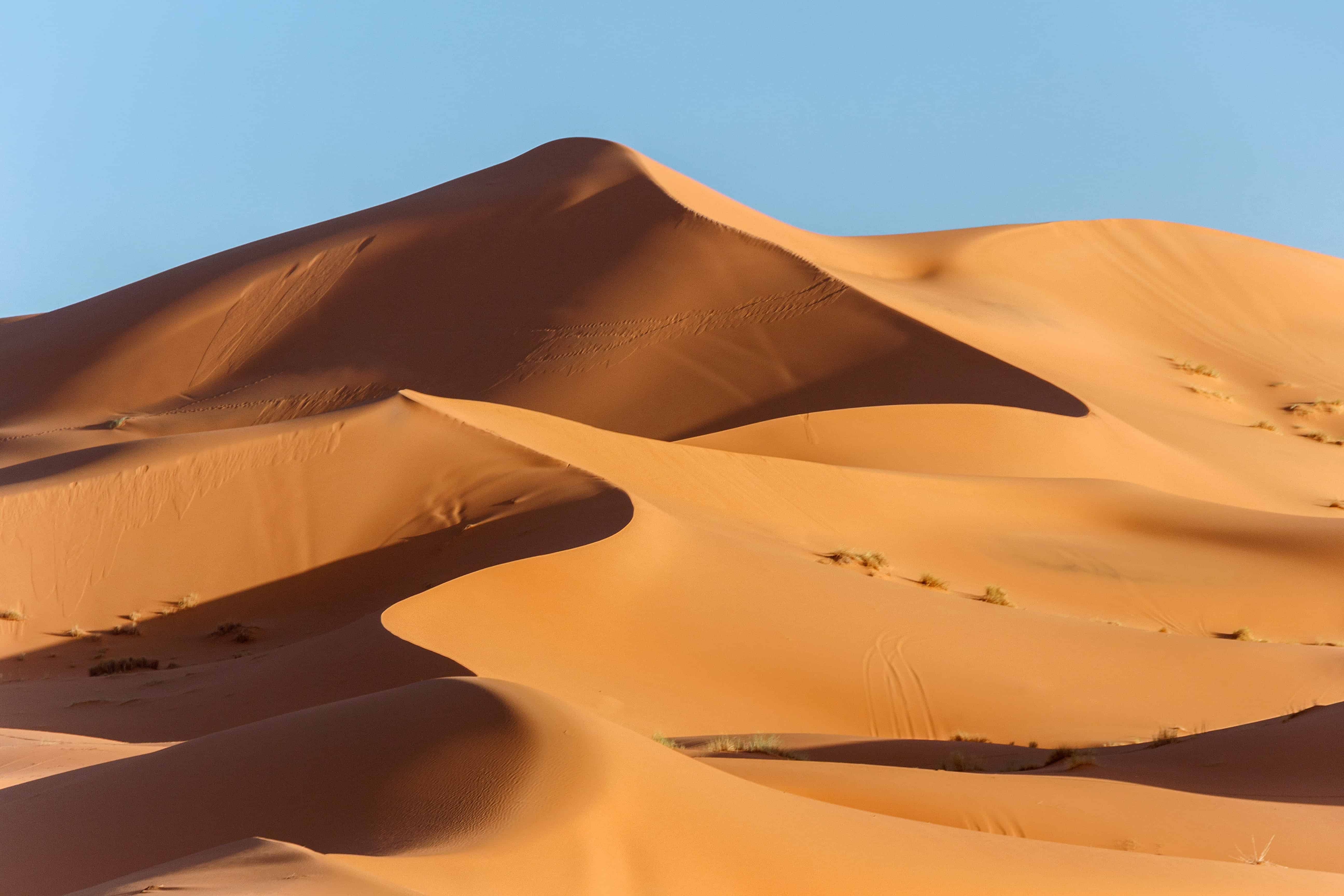
The Sahara Desert hails as the most famous largest desert in the world on our list. Its name comes from the Arabic word “ṣaḥrā” which means desert. In short, the Sahara Desert features the redundant name “desert desert.” It also goes by the titles “Largest Hot Desert” or “Largest Subtropical Landscape.” Located in North Africa, the sandy landscape stretches out to 11 countries. When you search for pictures of it on Google, the first choices you see usually include its sand dunes fields. This beautiful pattern of sand makes up about 15% of the desert’s area. They also reach up to 600 feet or 183 meters high. Meanwhile, Mt. Koussi, an extinct volcano, hails as the highest point in the hot landscape. It stands out with a height of about 11,204 feet or 3,415 meters.
The third-largest desert in the world is filled with not just sand but also a rich history. In 2012, archaeologists found cave and rock paintings that they can date back up to 7,000 years ago. The prehistoric artwork and remains showcase how people benefited from the lush greenery of the old Sahara. Since 1920, the Sahara Desert’s area grew about 10% of its original size. Some argue that the growth happens every dry season and returns to normal during the rainy season. However, a 2018 study states that climate change caused the expansion.
Arabian Desert (Subtropical)
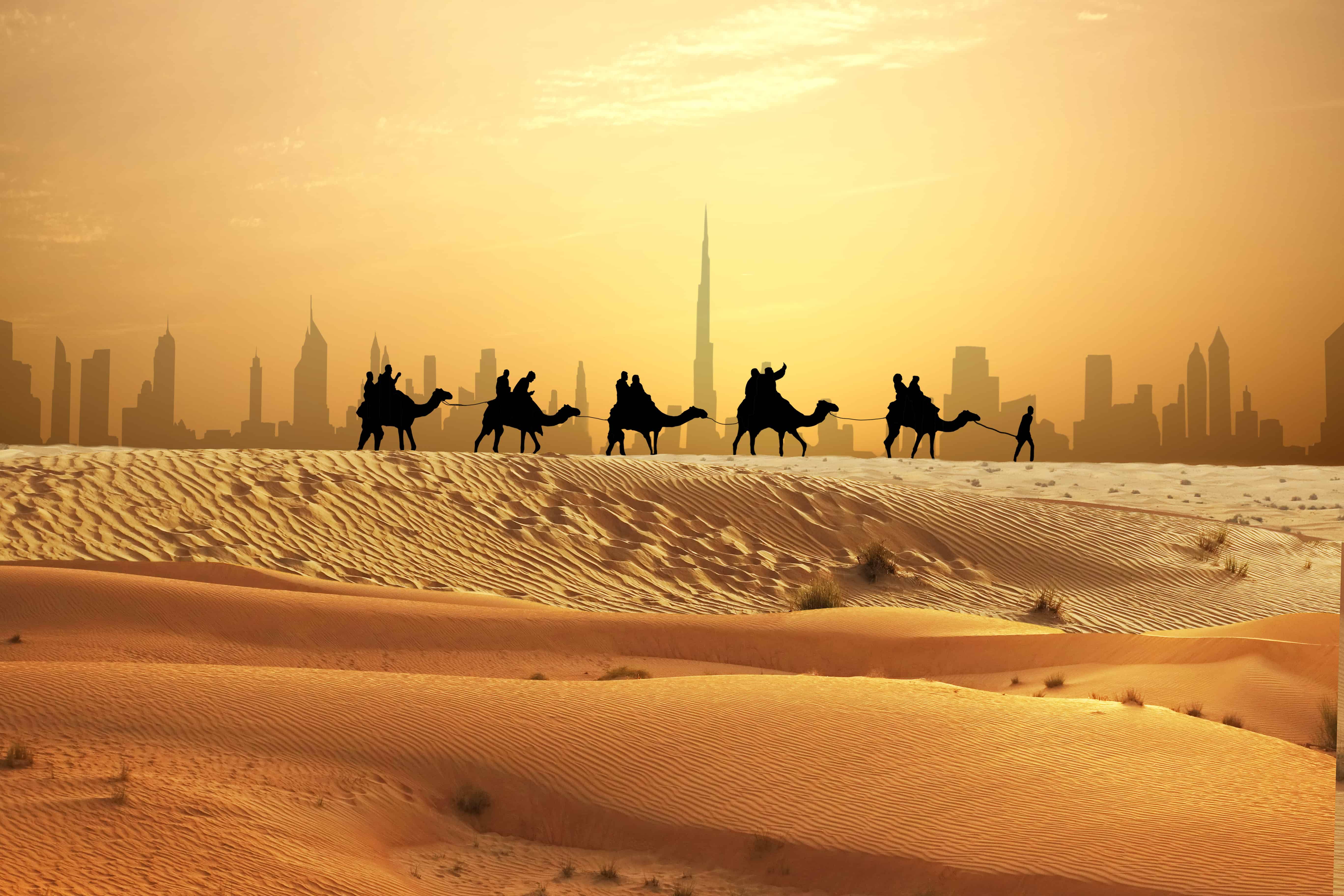
Currently, the Arabian Desert holds the title of the fourth largest desert in the world. Despite being dubbed as a desert, the Arabian subtropical landscape features several types of flora and fauna. It covers about 900,000 square miles across the major areas of Asia and the Arabian Peninsula. For thousands of years, the Arabian Desert serves as a home to several explorers and nomad groups.
The ecoregion of the Arabian Desert covers famous sand deserts like Rub’ al-Khali, An-Nafud, and Ad-Dahna. the view of Rub’ al-Khali may seem familiar to you if you’re a movie buff or a gamer. Located in Abu Dhabi, the large and sandy landscape served as the Jakki in “Star Wars: The Force Awakens” in 2015. In the “Matrix” film series, that section of the Arabian Desert played as the base of Machine City, Zero-One. For games, it provided the desert settings for games like 80 Days, Uncharted 3: Drake’s Deception, and Torchlight II. Mentioning these titles may encourage you to book a trip to the fourth largest desert in the world. However, you better prepare for the area’s hyper-arid climate. As a desert, it barely gets enough precipitation to grow lush vegetation. In summer, the daily temperature reaches up to 51 °C or 124 °F.
Gobi Desert (Cold Winter)
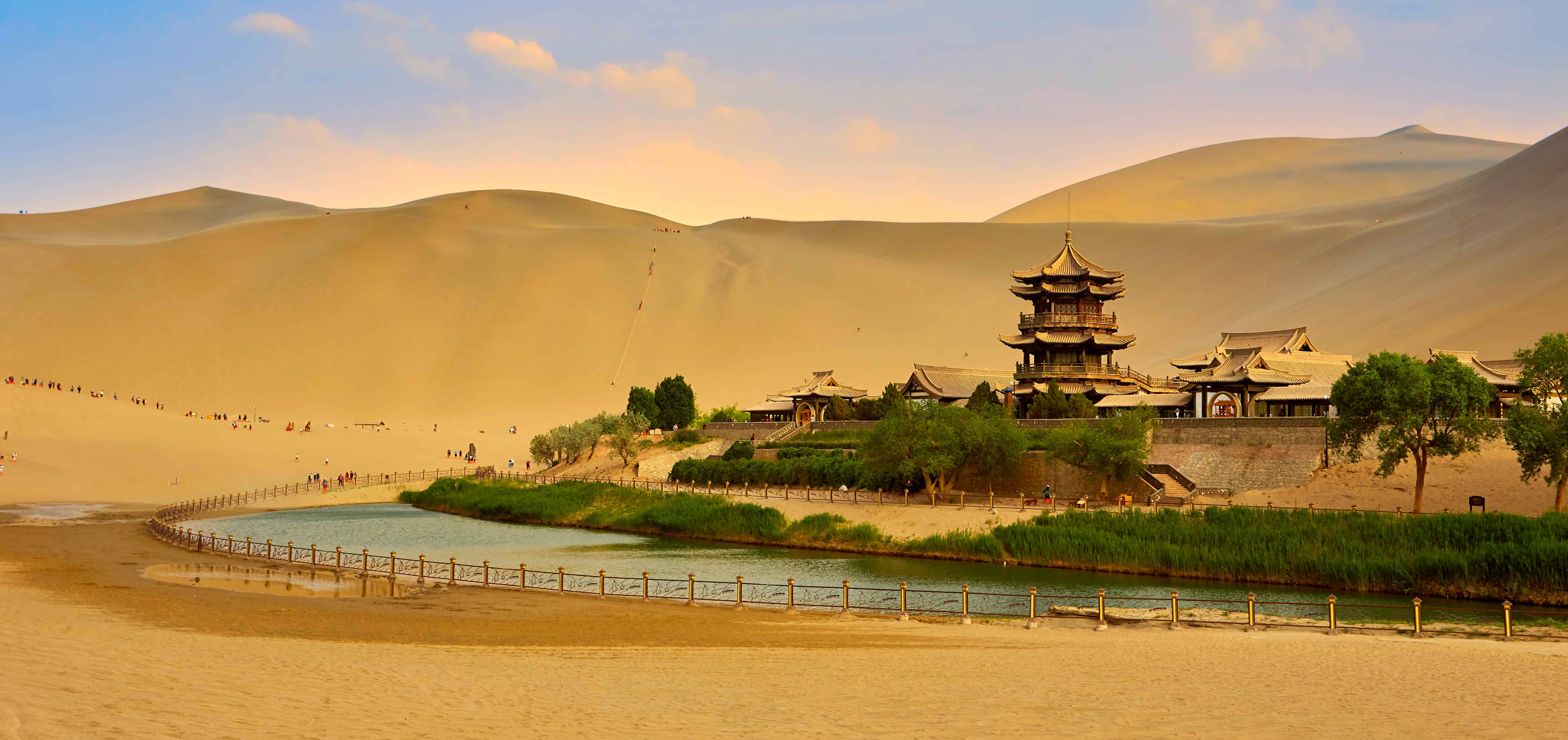
Spanning across major parts of Mongolia and China, the Gobi Desert hails as the largest desert in East Asia. Its cold terrain spans about 500,000 square miles. If you plan to travel here, you must equip your body with enough protection from the harsh cold weather. The nomad groups who reside in the Gobi Desert do not stay in one area due to the area’s climate. Because of this, we suggest you visit the beautiful landscape during the summer.
You might see historical accounts about the Gobi Desert written by Marco Polo himself. As one of the largest deserts in the world, the large expanse of land also offers a long history. Merchants once crossed its vast landscape to travel on the ancient Silk Road from East to West. Its rich history also includes holding forgotten parts of the Great Wall of China. These facts usually entice history buffs to travel and see the Gobi Desert’s beauty and culture. One of the most mesmerizing sights to behold is the Dunhuang Crescent Moon Spring. You can find it the unique oasis at the foot of the Singing Sand (Mingsha) Mountain. Most tour packages offered in the Gobi Desert include witnessing the spring in real life. Locals usually dubbed such tours usually include the Silk Road’s long history to entice more visitors.
Patagonian Desert (Cold Winter)

Another largest desert in the world that belongs to the Cold Winter category is the Patagonian Desert or Patagonian Steppe. It spans the countries of Chile, Argentina, and the Falkland Islands of the United Kingdom. The desert’s recorded temperature reaches 12°C (53.6°F) with a daily average of 3°C (37.4°F). When it comes to seasons, the area experiences about five months of summer and seven months of winter. Despite the harsh climate, several plants and animals manage to survive in the cold desert. The animals permanently reside in the Patagonian Desert where they can easily hunt for food or prey. One of the most common animals you can spot includes the South American Gray Fox or the Patagonian Fox. It preys on small mammals and rodents that also reside in the desert. Meanwhile, people who lived and traveled around the vast desert includes several indigenous groups. Experts further proved these facts when a few cave paintings emerged from certain areas.
The Patagonian Desert also played a big part in Argentian and European history during the mid-19th century. Several settlements from nearby regions spread throughout the desert’s edges. In the 1870s, the Argentine army set out to fulfill the Conquest of the Desert campaign. It aimed to take down warlords and claim sections of the landscape to Argentina. The conquest caused the tragic population decline of indigenous people in the area. However, the recorded death toll of about 1,000 natives. Those who survived fled and sought refuge in Chile and the Andes. This tragic incident in the Patagonian Desert serves as a dark reminder of the mistreatment of indigenous people. Some visit the area to honor and recall the peaceful lives they led in the desert.
Great Victoria Desert (Subtropical)

Among all the largest deserts in the world, the Great Victoria Desert in Australia hosts the most diverse species of reptiles. Experts recorded more than 100 species, including the famous Thorny Devil (Moloch horridus). As a subtropical desert, the Great Victoria Desert features a large wasteland with patches of grassland plans and small sandhills. Despite the area’s intense heat signatures, several groups of Indigenous Australians reside in the country’s largest desert. Their communities also managed to make a living and develop their culture thanks to various outreach programs.
The Great Victoria Desert got its name in 1875 from British explorer Ernest Giles. He thought of the name to honor then-reigning Queen Victoria. At that time, he was hailed as the first European to complete an expedition and cross the vast landscape. Following his achievement, other explorers such as David Lindsey and Len Beadell also held expeditions in the desert. Nowadays, several tourism Australian tourism groups can help you achieve the same feat. Locals divided different sections of the large desert for interested tourists. Starting from the desert’s western outskirts, the division proceeds to the Little and Big Deserts. They then usually end at the Murray Sunset National Parks for interested campers. Customers can choose between one or multiple-day tours with camping options. They may also select packages that include seeing the wildlife that resides in Australia’s largest desert.
Kalahari Desert (Subtropical)
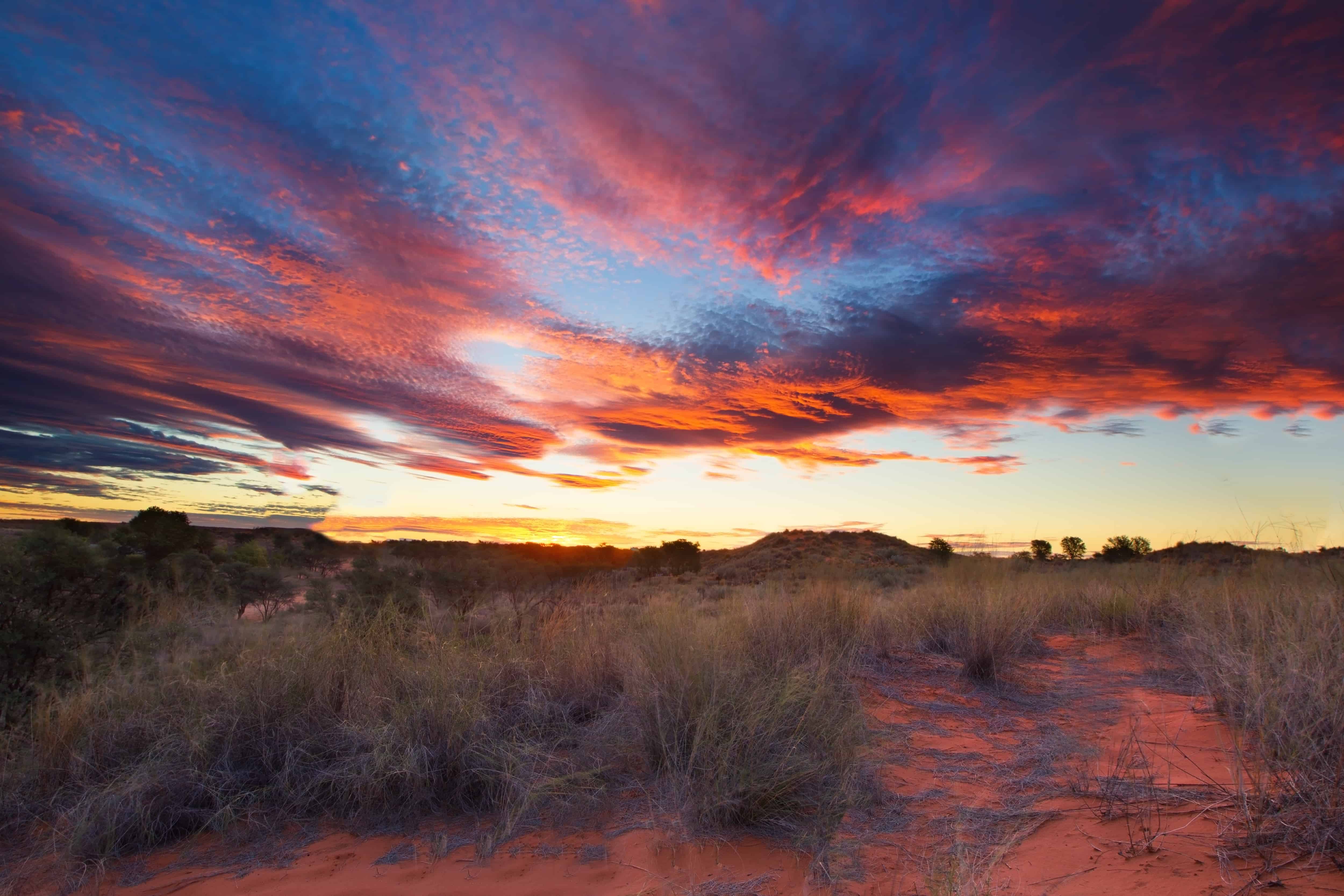
Like most of the largest deserts in the world, the Kalahari Desert attracts tourists despite the area’s harsh climate. We know it as a subtropical desert that experiences extreme temperature changes throughout the day. The vast wasteland features areas with relatively high altitudes. No matter what season, daytime brings out intense heat in the area. Afterward, the absence of the sun makes the wasteland drop up to zero degrees at night, especially during winter. Despite this, the Kalahari Desert offers small areas of lush vegetation for its inhabitants. Located in South Africa, the majestic desert covers about 900,000 square kilometers of land. Between 1996 and 1997, more people heard about the desert’s secret treasures, namely, an unknown diamond mine. The tribes residing in the said area fought in court after they got evicted from their homes. Fortunately, the Botswana High Court ruled in the tribes’ favor.
The Kalahari Desert reaches the South African countries of Namibia, Botswana, and the Northern Cape Province. Despite the harshness of the semi-arid climate, several types of wildlife live peacefully in the vast desert. The landscape also hails as one of the oldest and largest deserts in the world. Because of this, tourists can’t help but travel to the Kalahari Desert. Most of them hope to learn about the area’s rich history. Other people book eventful safaris that feature the desert’s wildlife and culture.
Great Basin Desert (Cold Winter)
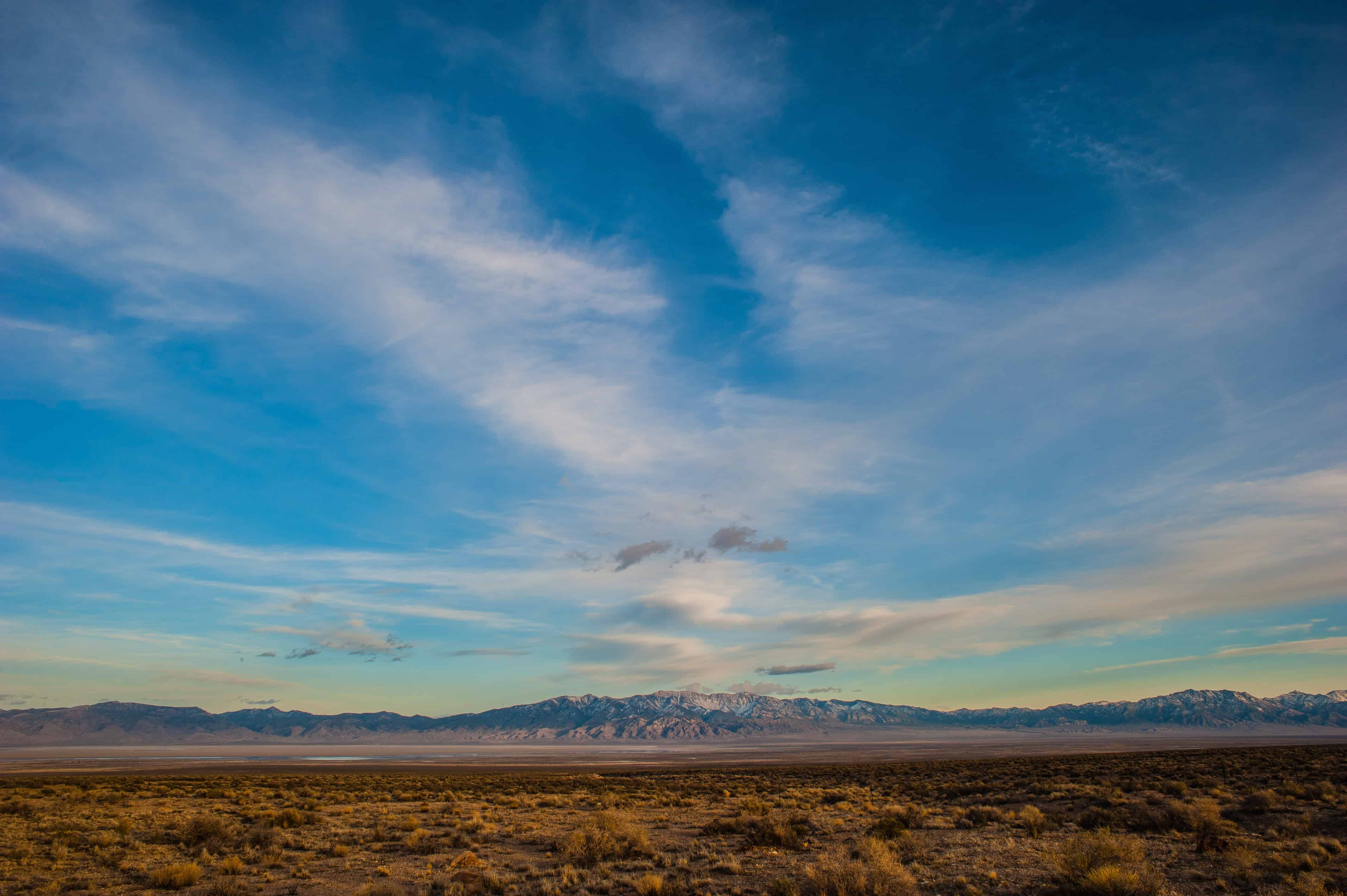
The Great Basin Desert claims the title of being the largest desert in the USA. Because of this, it’s understandable why it also holds a top spot as one of the largest deserts in the world. With a reach of about 190,000 square miles, the Great Basin Desert spans the US States of California, Idaho, Oregon, Nevada, and Utah. The Sierra Nevada Range and the Rocky Mountains border the landscape on the west and east respectively. While experiencing less precipitation, the vast expanse receives light snowfall during the winter. Based on its name, the Great Basin Deserts consists of hundreds of basins and valleys. It also got its title from the natural drainage system made possible by the area’s rain shadow effect.
Tourists can’t help but flock to the Great Basin Desert for the unique sights and activities offered in the area. Upon arrival, they usually visit the rich environment history featured in the area. People love to check out the trees that lived up for more than 4,000 years during a relaxing stroll. Others choose to pass through the Lehman Caves, a subterranean cave system featuring crystals, stalactites, stalagmites, and flowstones. At night, visitors can admire the stars at the Basin’s Certified IDA International Dark Sky Park (IDSP). Once the total darkness falls, you can see up to five planets in a sea of twinkling stars.
Syrian Desert (Subtropical)
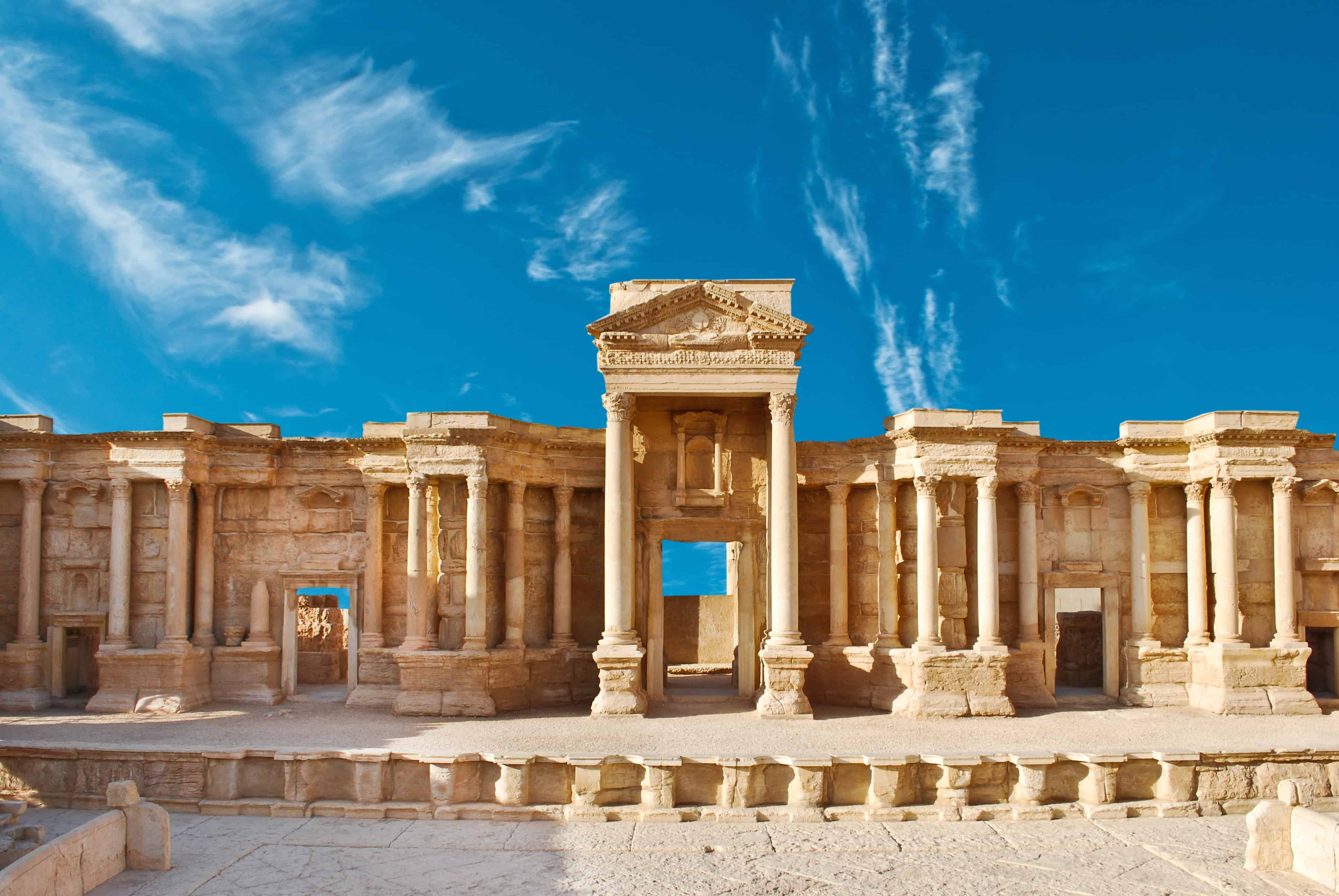
Aside from the Sahara, one of the most familiar largest deserts in the world we know is the Syrian Desert. The subtropical region stretches the countries of Syria, Jordan, Iraq, and Saudi Arabia. During Ancient Times, the nomadic Bedouin tribes famously settled around the desert’s oases. Some of their remaining ancestors continue to uphold their culture and tradition while residing in the vast landscape. Due to its rich history, you can find Safaitic inscriptions or South Semitic scripts. Historians can trace these old scriptures’ origins between the first century BC and the fourth century AD.
When tourists book tours in the Syrian Desert, they usually aimed to see the ruins of ancient cities like Palmyra. The old Semitic city earned its wealth from taking part in famous trade caravans. Their people also gained fame for building colonies along the Silk Road and the Roman Empire. Some of Palmyra’s known historical structures used to tower over a corner in the Syrian Desert. Due to the passage of time, only ruins of those structured can be seen today. Tours in the Syrian Desert used to include viewing the ruins of Palmyra. In 2011, the Syrian Civil War caused the steep decline of the country’s tourism. Unfortunately, this all happened just when tourism reached an all-time high. Around 2017, Syria’s government launched the Syrian Desert campaign to go against the Islamic State of Iraq and the Levant (ISIL). This further contributed to the decrease of tourists in fear of their safety.
Other Famous Deserts in the World
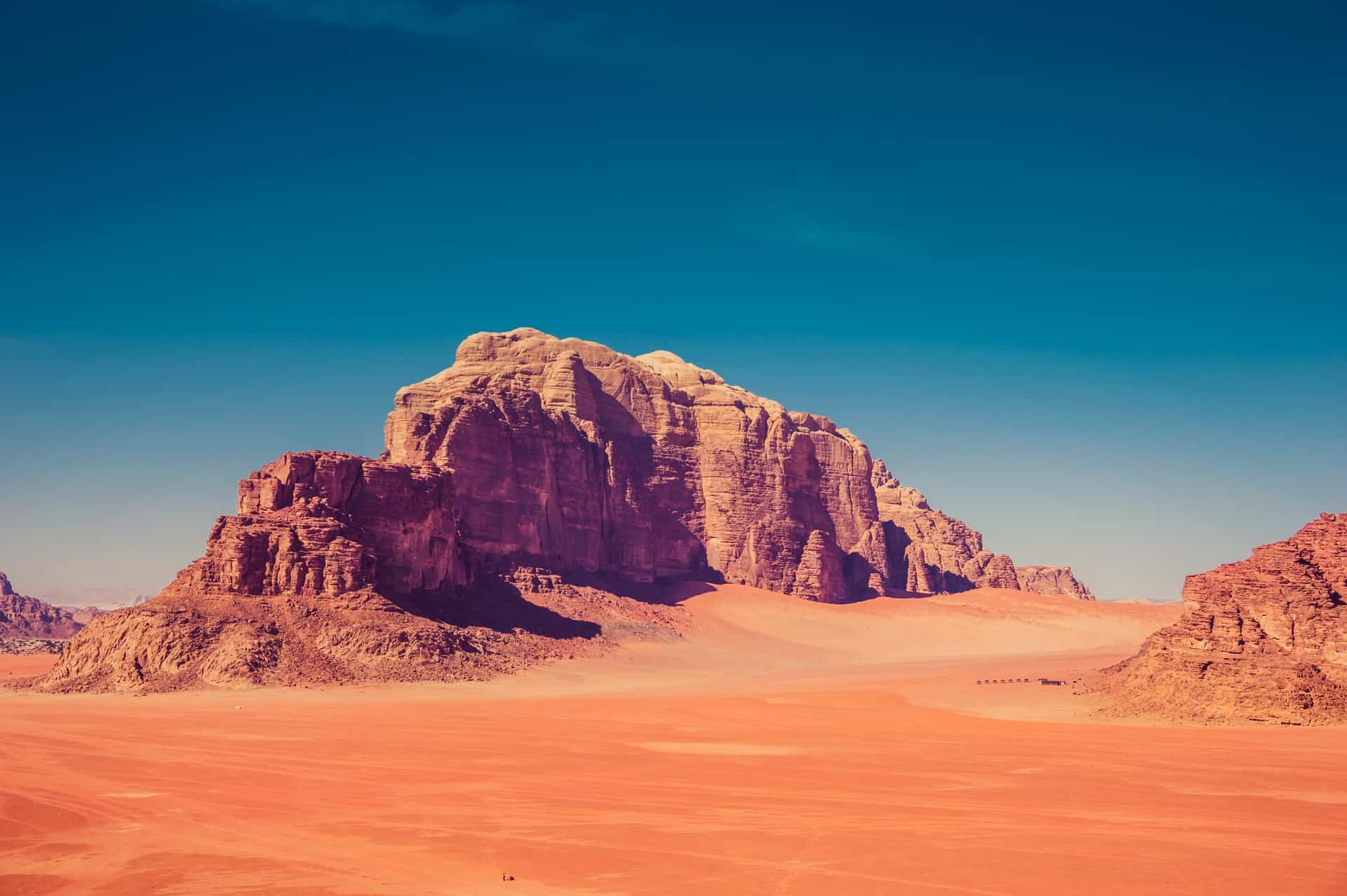
As we continue to discuss the world’s largest deserts you probably wondered why people love to travel to these places. What do they find so alluring about barren wastelands? What makes the largest deserts of the world such hotspots for tourism? Well, we believe one of the main reasons came from the crowds of people on vacation. Unlike camping grounds in forests and national parks, camping near the desert offers fewer crowds. Plus, not a lot of people get enticed with adjusting to the extreme weather of these wastelands.
Aside from the largest deserts in the world, people also like to visit different wastelands that offer beautiful views. Those who wish to travel to more than one famous desert usually stay in North and South America. These continents feature several deserts with harsh climates that you can adjust to during the summer. Below, we compiled the information we gathered about two deserts that receive a lot of tourists in the summer.
Mojave Desert (Subtropical)
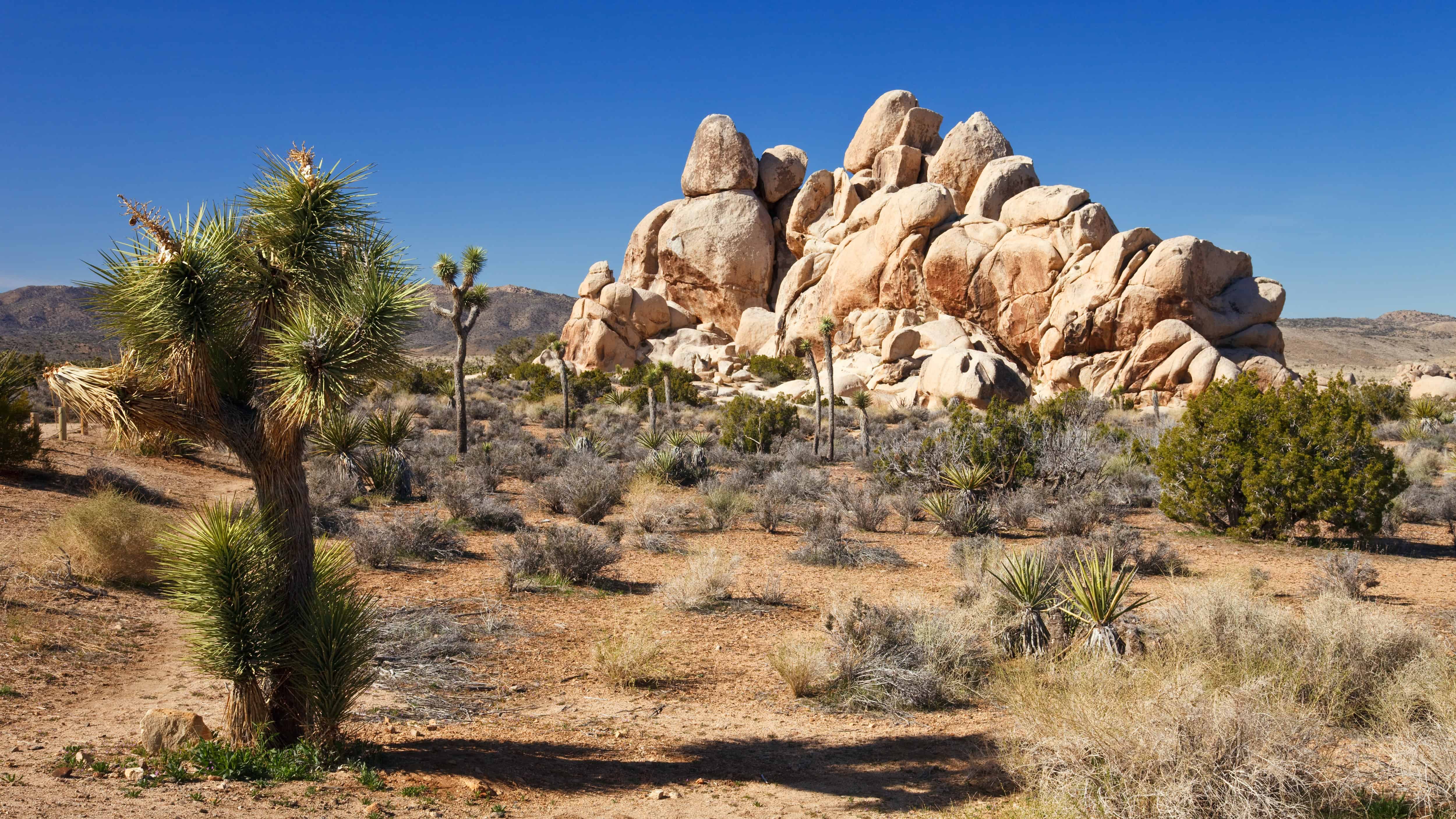
Americans dubbed the Mojave Desert as the driest desert in the USA. Despite being a small desert, it stretches between the US States of California, Nevada, Arizona, and Utah. Throughout the year, the Mojave Desert experiences extreme temperature readings. In the winter, the area suffers from strong winds and intense bouts of rain and snowfall. Meanwhile, strong thunderstorms that result in flash floods occur during the late months of summer. Despite this, people continue to flock to the vast expanse of the Mojave Desert. If you’re a movie buff, the wasteland might seem familiar to you. Its beautiful landscape was used for films like “Star Trek” and “Fear.”
Due to the increase of human development, a big chunk of the Mojave Desert now features urbanized areas. More highways and structures keep appearing to entice more people to the area. Unfortunately, this caused the strictness of the desert’s intact conservation status. The central and southwest parts remain open to urban development and agricultural grazing. However, areas like the Mojave National Preserve and Death Valley receive protection from the California Desert Protection Act.
Atacama Desert (Mild Coastal)
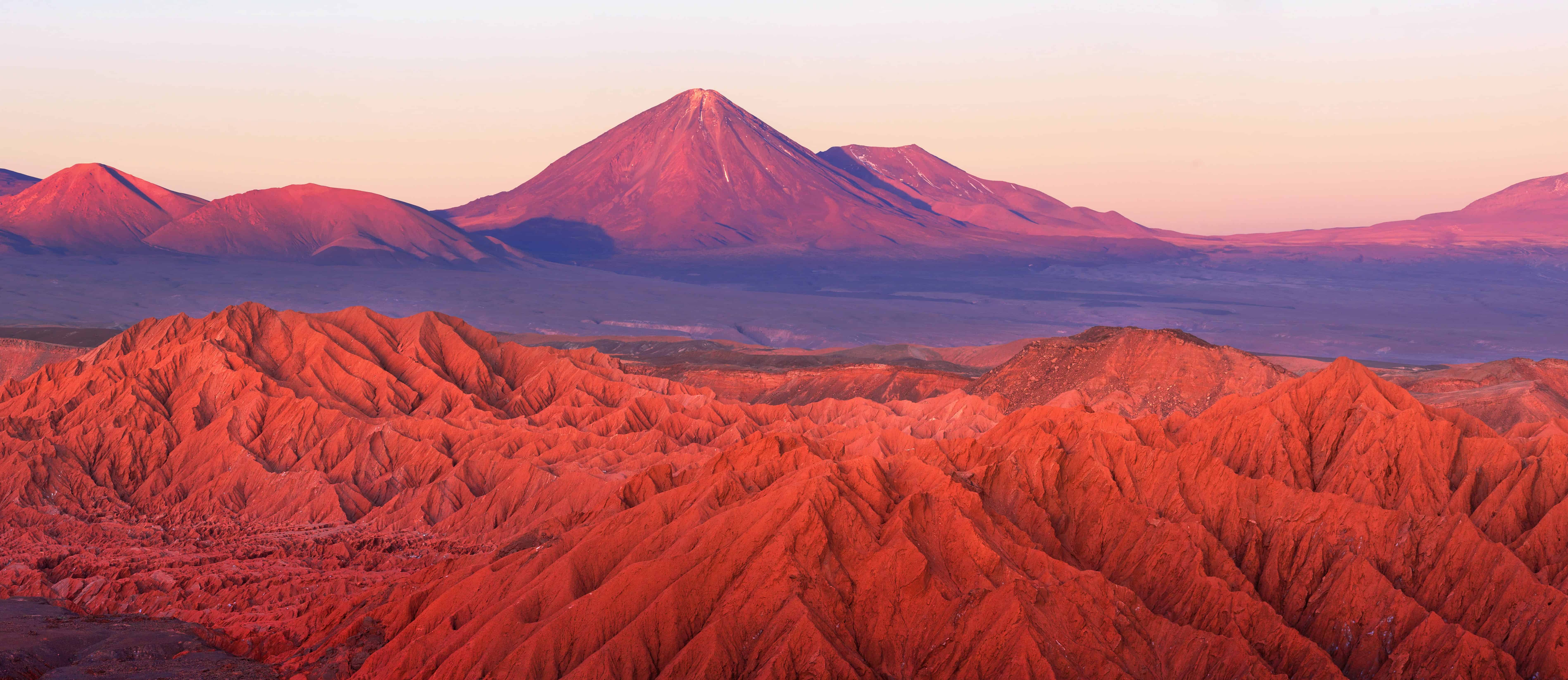
Another landscape beloved by tourists is the Atacama Desert. Its vast expanse reaches the countries of Chile and Peru. The area experiences such a lack of precipitation that it became one of the driest places in the world. Dubbed as the driest nonpolar desert, experts often compare the wasteland to that of Mars‘ atmosphere. Experts use the Atacama Desert as a testing site due to the similar Mars compounds in the area. They usually roll out rover prototypes that they plan to send to the Red Planet.
Despite its arid weather, tourists continue to visit the Atacama Desert for its picturesque views. The mild coastal desert displays a colorful sky both night and day. The desert plateau’s sky gets painted with purple, pink, and orange views when the sun sets or rises. At night, visitors flock the several observatories that feature mesmerizing views of the stars.
Was this page helpful?
Our commitment to delivering trustworthy and engaging content is at the heart of what we do. Each fact on our site is contributed by real users like you, bringing a wealth of diverse insights and information. To ensure the highest standards of accuracy and reliability, our dedicated editors meticulously review each submission. This process guarantees that the facts we share are not only fascinating but also credible. Trust in our commitment to quality and authenticity as you explore and learn with us.
